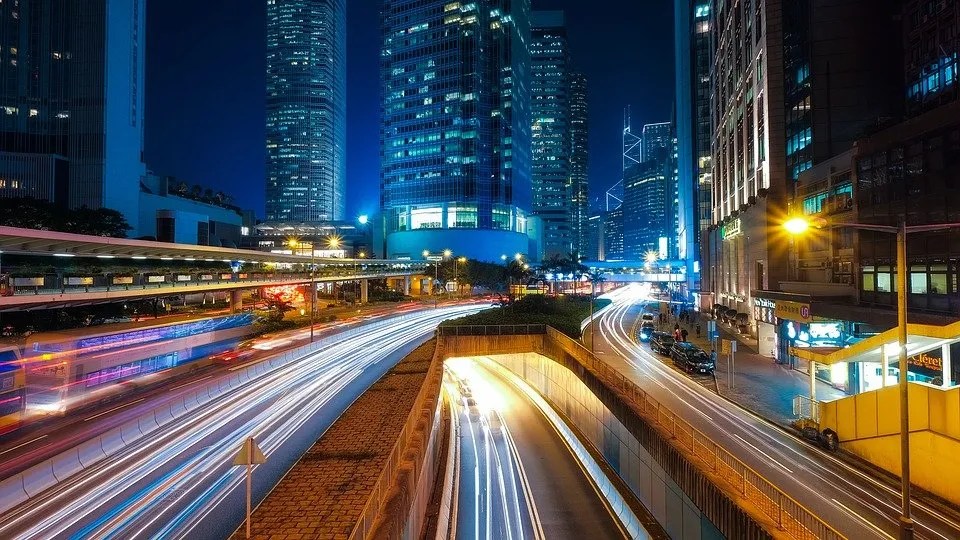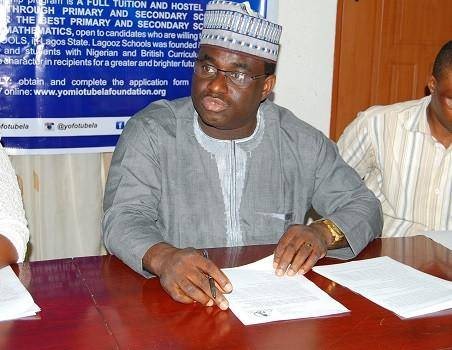
With multiple cities boasting populations exceeding one million, it’s no surprise that Nigeria is one of the world’s most populous countries. Its largest city, Lagos, contributes 9 million residents to the total population, while there are also 79 cities with a minimum population of 100,000 and 249 cities with populations greater than 10,000.
More than half of Nigeria’s population, 52%, live in rural areas. While this is a relatively high percentage, rural people have declined in recent years, falling from 85% in 1960. This decrease in numbers is most likely due to issues in Nigeria’s rural areas, such as a lack of or sporadic electricity, sanitary conditions, and, of course, a lack of industry. Many natives are migrating to urbanized, developed areas to take advantage of job opportunities and to avoid the poverty that can be found in many of the country’s smaller cities and villages.
Nigeria has eight cities with populations greater than one million, 81 cities between 100,000 and one million, and 248 cities with populations between 10,000 and 100,000. Lagos, Nigeria’s biggest city, has a population of people.
This article examines Nigeria’s largest city in terms of population and land mass separately. Depending on the context, each of these metrics could be used to differentiate the size of a city and should not be confused with one another. A landmass is a large region or area of land, whereas a population is a subgroup of individuals within the same species that live and breed in the same geographic area.
Below are the six (6) largest cities in Nigeria by population and landmass.
Largest Cities in Nigeria by Population
1. Lagos (9,000,000 people)
Lagos, Nigeria’s biggest city and the second-most populous city in Africa, is located in Lagos State, the state with the second-largest population in Nigeria. This soon-to-be Mega-City serves as the economic capital of West Africa, attracting domestic and international investors due to its numerous opportunities.
Lagos is a prominent African financial center and economic center of Lagos State and Nigeria. The city has been dubbed Africa’s cultural, financial, and entertainment capital and has a significant impact on commerce, entertainment, technology, education, politics, tourism, art, and fashion.
Lagos is ethnically diverse due to local and global migration, but the Yourbas’ are the dominant ethnic group. Like any other urban city, the state suffers from traffic congestion and pollution. Despite economic growth, economic disparities among Lagos residents have become a phenomenon. Slum-dwellers account for approximately 66 per cent of the population in Lagos.
Lagos is divided into two major geographical areas: the “Island” and the “Mainland.” The island is primarily made up of islands connected by bridges separated by various creeks. Some creeks’ smaller sections have been dredged and built over. This area of Lagos hosts most of the city’s business and entertainment activities. It also contains the majority of Lagos’ upscale residential neighborhoods.
The Lagos mainland also has a large population, and most industries are located there. The mainland is well-known for its music and nightlife, which used to be concentrated in the Yaba and Surulere neighborhoods. However, more nightclubs have opened on the Island recently, making it more popular (particularly Victoria Island, Ikate and Lekki Phase 1).
2. Kano (3,626,068 people)
Kano is the capital of Kano State in Nigeria’s northwestern region. Kano, Nigeria’s second-largest city, has more than 3.6 million population. Kano is a major trans-Saharan trade route in the Savanna south of the Sahel. Kano is a significant producer and exporter of agricultural products such as hides, skins, peanuts, and cotton. Inconsistent government policies and sporadic electricity supply have hampered manufacturing and industry, so Kano’s economy is primarily based on trade, retail, and services. The Hausas and Fulanis predominate in the state. The Hausa language is widely spoken in the region, but English is the official business language. Like other areas in the state and north, the city’s tropical savanna climate is an important feature. Kano is usually hot all year, but it is slightly cooler from December to February. Kano is generally dry, except for the rains that fall from June to September.
3. Ibadan (3,565,108 people)
Ibadan is the capital and largest city of Nigeria’s Oyo State. With a population of over 3.5 million people, it is Nigeria’s third-biggest city after Lagos and Kano. Ibadan was Nigeria’s largest and most populous city at its independence in 1960 and the second-most populous in Africa after Cairo. Ibadan was known for its commercial and trade activities that flourished during British rule. Cigarette manufacturing, food processing, cacao, and cotton are among the primary agricultural products produced in the city.
According to the UN, Ibadan is the second-fastest-growing city in Africa and ranks third in West Africa in the tech startups index.
4. Kaduna (1,582,102)
Kaduna is the state capital of Kaduna and the former political capital of Northern Nigeria. It is situated on the Kaduna River in northwestern Nigeria and has over 1.5 million people. With its rail and important road network, Kaduna serves as a trade center and a central transportation hub gateway to northern Nigeria.
Kaduna is a central industrial hub in Northern Nigeria, producing textiles, machinery, steel, aluminum, petroleum products, and bearings. Plastics, pharmaceuticals, leather goods, furniture, and televisions are examples of other light manufacturers. Agriculture is another important industry in Kaduna, and the Bank of Agriculture has its headquarters. Cotton, peanuts, sorghum, and ginger are the main agricultural exports.
5. Port Harcourt (1,148,665 people)
Rivers State’s capital and largest city is Port Harcourt. After Lagos, Kano, and Ibadan, it is Nigeria’s fourth most populous city in Nigeria. When the first shipment of Nigerian crude oil was exported through Port Harcourt in 1958, the city’s economy shifted to petroleum. Port Harcourt has further developed thanks to the benefits of the Nigerian petroleum industry, with modernization features such as overpasses, city blocks, and taller and more substantial buildings.
Port Harcourt has several public and private tertiary institutions. Rivers State University, the University of Port Harcourt, and the Rivers State College of Health Science and Technology are among these institutions.
6. Benin City (1,125,058 people)
Benin City is the capital and largest city of the Nigerian state of Edo. With a population of 1,782,000, it is Nigeria’s fifth-largest city after Lagos, Kano, Ibadan, and Port Harcourt. The city was the most important settlement of Edo Kingdom, which existed from the 13th to the 19th centuries. It had important trade relations with Portugal for centuries before being captured, sacked, and burned by a British punitive expedition in 1897. The indigenous people of Benin City are known as the Edo (Benin People) and speak the Edo or Bini language.
The Bini people have one of the wealthiest dress cultures in Africa. They are predominantly known for their beads (the beads stand for royalty and usually stand out during the traditional marriage of the Benin people).
6 Largest/Biggest Cities in Nigeria by Landmass
1. Gusau (3364 km/sq)
Gusau, in northwest Nigeria, is the capital of Zamfara State. Although it lacks major geographical features, the city of 3,364 km/sq (2,090 mi) is known for its agricultural activities and production of crops such as cotton, tobacco, and groundnuts. Gusau, Nigeria, is located north of a line drawn from Kebbi to Kano and has been an essential commercial northern town since the days of the colonial masters. It was also an administrative center with good road and rail networks for moving agricultural produce in and out of Gusau. The Fulani, Hausa, Yoruba, Igbo, Igala, and Nupe ethnic groups make up most of its diverse ethnic population.
2. Ibadan (3080 km/sq)
Ibadan is located in southwestern Nigeria, in the southeast corner of Oyo State, about 119 kilometers (74 miles) northeast of Lagos and 120 kilometers (75 miles) east of Nigeria’s international border with the Republic of Benin. The city has the largest landmass in Nigeria after Gusau, at 3,364 square kilometers (1,190 square miles). It is within the tropical forest zone but close to the forest-derived savanna boundary. The city’s elevation ranges from 150 m in the valley area to 275 m above sea level on the major north-south ridge that runs through the city’s center.
The city of Ibadan is naturally drained by four rivers, each with numerous tributaries: the Ona River in the north and west, the Ogbere River in the east, the Ogunpa River running through the city, and the Kudeti River in the center.
3. Oyo (2427 km/sq)
Oyo is an ancient city in the Nigerian state of Oyo. It is one of Nigeria’s major cities and the popular seat of the Alaafin of Oyo, located 32 miles west of Ibadan. Oyo has a large landmass of 2427km/sq and a population of 441,729 people. Agriculture provides a living for the people of Oyo City. The city is centrally located on the dual carriageway A1 expressway from Lagos that connects Ibadan to Ilorin.
4. Ife (1791 km/sq)
Ife is a historical Yoruba city in southwestern Nigeria. The city is in modern-day Osun State. Ife has a large landmass of 1791 km/sq, is about 218 kilometers northeast of Lagos, and has the highest population in Osun State (509,813). Ilé-Ifè is famous worldwide for its ancient and naturalistic bronze, stone, and terracotta sculptures dating from 1200 to 1400 A.D. Ife is home to well-known universities in Nigeria and abroad, including Obafemi Awolowo University (formerly University of Ife) and Oduduwa University. It also houses attractions such as the Nigerian Natural History Museum. Ife is home to a regional agricultural center where vegetables, grain, cocoa, tobacco, and cotton are grown.
5. Abuja (1769 km/sq)
Abuja is Nigeria’s capital and the country’s eighth most populous city. It is the fifth-biggest city in terms of landmass after Gusau, Ibadan, Oyo, and Ife, with a landmass of 1769 km/sq. It is a planned city in the country’s center, within the Federal Capital Territory, built primarily in the 1980s based on a master plan by Japanese architect Kenzo Tange. On December 12, 1991, it succeeded Lagos as the country’s capital.
Nigeria’s administrative and political capital is Abuja. Because of Nigeria’s geopolitical influence in regional affairs it is also an essential capital on the African continent. The Gbagyi (Gwari) are Abuja’s indigenous inhabitants, with the Gbagyi language formerly serving as the region’s primary language.
The Bassa, Gwandara, Gade, Dibo, Nupe, and Koro are some of the other tribes in the area. Because of Nigeria’s ethnic and religious divisions, plans have been developed since its independence to locate its capital in a neutral location by all major ethnic parties and close to all of the country’s regions. In the early 1970s, the location was finally designated in the country’s center as a symbol of neutrality and national unity. Another impetus for Abuja came from Lagos’ population boom, which overcrowded the city and made living conditions squalid. Since Lagos was already experiencing rapid economic development, the Nigerian regime saw the need to expand the economy into the country’s interior and thus decided to move its capital to Abuja.
6. Kuje (1644 km/sq)
Kuje is a capital territory suburb with a landmass of 1644 km/sq and a lot of greenery and agricultural activity, which is why it is often referred to as Abuja’s food hub. It also has several “independent” gas stations that are unpopular due to the apparent inaccuracy of their pump calibration.
Every four days, a colorful market is held in the center of Kuje, with stalls selling fruit, vegetables, very fresh meat, other provisions, household goods, fabric, shoes, clothing, smoked fish, and posters of European footballers posing with their houses, wives, and cars.
Because of its proximity to Abuja and the removal of informal settlements along the airport road, Kuje is experiencing rapid residential development. A network of well-tarred roads serves zones of undeveloped housing while frequently impassable, and potholed dirt roads link existing residential areas.
Conclusion
When compared to other regions, Nigeria’s northern states have the largest landmass. When it comes to cities, however, this article has demonstrated that the cities with the most remarkable landmass are not limited to the northern region.




